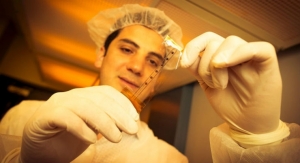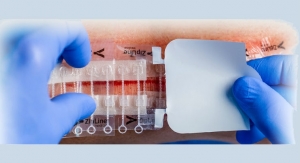Videos
neoSurgical Expands Indications for neoClose Device
neoSurgical Expands Indications for neoClose Device
Closing port site incisions up to 30 mm may include bariatric, colorectal, and cholecystectomy lap surgeries.
By neoSurgical Inc.04.12.16
neoSurgical Inc. has expanded its neoClose product offerings to include port site incisions up to 30mm (3cm), which may include bariatric, colorectal and cholecystectomy laparoscopic surgeries. The U.S. Food and Drug Administration-cleared neoClose device may now be used to close port site incisions from 5 mm to 30 mm (3 cm) in length.
Watch the video below to learn more about neoClose:
Laparoscopic (“lap”) abdominal surgery requires small incisions or “port sites” in the abdomen. The port site must be closed after lap surgery. While lap surgery itself is minimally invasive, herniation, or protrusion, of abdominal tissue through the port site after closure (commonly referred to as trocar site hernia, or TSH among doctors), can lead to morbidity due to small bowel strangulation, for example, or nerve and vessel entrapment, resulting in infection, bleeding and pain.
More than 3 million laparoscopic procedures annually in the United States require closure, of which about 25 percent currently use a port site closure device. Unfortunately, 5 percent to 50 percent 1,2,3 of all laparoscopic incisions herniate. And, there is a 10 percent to 45 percent chance of recurrence after a first hernia. With lap surgery in-patient costs as high as $30,000, herniation and recurring herniation add $3 billion annually in costs to the U.S. healthcare system.
“Surgeons in hospitals across the United States now have the opportunity to perform the gamut of standard laparoscopic surgeries using our neoClose device,” said Barry Russell, CEO of neoSurgical. “The reason that neoClose is being adopted so rapidly by lap surgeons is because of the demonstrated clinical superiority of neoClose versus standard of care techniques for closing port sites—a decades-old standard, by the way, that must be recast in order to improve patient outcomes and safety.”
Until 2014, TSH complications were thought to occur at a reported rate of about 1 percent to 6 percent among the 6 million lap surgery port sites closed each year. But in a clinical study, nearly 26 percent of patients were diagnosed with TSHs. Thus, TSHs have been grossly under-diagnosed.
A second published study found the total trocar site hernia rate to be 39.3 percent at three years. Most recently a third, multi-institutional study revealed that hernia occurrence can lead to a repetitive cycle of repeat procedures and complications. The standard for port site closure has been Closed Loop Suture. neoClose works by the use of a Vector X closure, approximating the tissue together and tying into place for a secure closure with up to 75 percent less tension compared to standard closed loop suture.
neoSurgical is a commercial-stage company that developed neoClose, a device intended to be the new standard for lap surgery port site closure, a potential $300 million opportunity. The Newton, Mass.-based company estimates its neoClose system has now been used more than 10,000 times in U.S. hospitals.
References:
1. Comajuncosas J. et al, Risk factors for umbilical trocar site incisional hernia in laparoscopic cholecystectomy: a prospective 3-year follow up study Am J Surg. 2014 Jan; 207(1):1-6.
2. Scozzari G, et al. High incidence of trocar site hernia after laparoscopic or robotic Roux-en-Y gastric bypass. Surg Endosc. 2014 Oct; 28(10):2890-8
3. Holihan JL et al. Adverse events after Ventral Hernia repair: The vicious Cycle of complications, J Am Coll Surg. 2015
Watch the video below to learn more about neoClose:
Laparoscopic (“lap”) abdominal surgery requires small incisions or “port sites” in the abdomen. The port site must be closed after lap surgery. While lap surgery itself is minimally invasive, herniation, or protrusion, of abdominal tissue through the port site after closure (commonly referred to as trocar site hernia, or TSH among doctors), can lead to morbidity due to small bowel strangulation, for example, or nerve and vessel entrapment, resulting in infection, bleeding and pain.
More than 3 million laparoscopic procedures annually in the United States require closure, of which about 25 percent currently use a port site closure device. Unfortunately, 5 percent to 50 percent 1,2,3 of all laparoscopic incisions herniate. And, there is a 10 percent to 45 percent chance of recurrence after a first hernia. With lap surgery in-patient costs as high as $30,000, herniation and recurring herniation add $3 billion annually in costs to the U.S. healthcare system.
“Surgeons in hospitals across the United States now have the opportunity to perform the gamut of standard laparoscopic surgeries using our neoClose device,” said Barry Russell, CEO of neoSurgical. “The reason that neoClose is being adopted so rapidly by lap surgeons is because of the demonstrated clinical superiority of neoClose versus standard of care techniques for closing port sites—a decades-old standard, by the way, that must be recast in order to improve patient outcomes and safety.”
Until 2014, TSH complications were thought to occur at a reported rate of about 1 percent to 6 percent among the 6 million lap surgery port sites closed each year. But in a clinical study, nearly 26 percent of patients were diagnosed with TSHs. Thus, TSHs have been grossly under-diagnosed.
A second published study found the total trocar site hernia rate to be 39.3 percent at three years. Most recently a third, multi-institutional study revealed that hernia occurrence can lead to a repetitive cycle of repeat procedures and complications. The standard for port site closure has been Closed Loop Suture. neoClose works by the use of a Vector X closure, approximating the tissue together and tying into place for a secure closure with up to 75 percent less tension compared to standard closed loop suture.
neoSurgical is a commercial-stage company that developed neoClose, a device intended to be the new standard for lap surgery port site closure, a potential $300 million opportunity. The Newton, Mass.-based company estimates its neoClose system has now been used more than 10,000 times in U.S. hospitals.
References:
1. Comajuncosas J. et al, Risk factors for umbilical trocar site incisional hernia in laparoscopic cholecystectomy: a prospective 3-year follow up study Am J Surg. 2014 Jan; 207(1):1-6.
2. Scozzari G, et al. High incidence of trocar site hernia after laparoscopic or robotic Roux-en-Y gastric bypass. Surg Endosc. 2014 Oct; 28(10):2890-8
3. Holihan JL et al. Adverse events after Ventral Hernia repair: The vicious Cycle of complications, J Am Coll Surg. 2015
Related Searches:



















